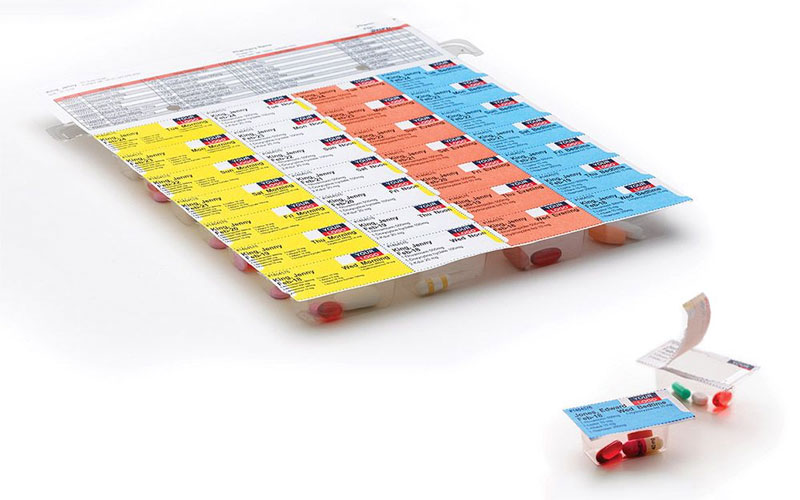
Recently, individually packaging medications has become a new and innovative way for pharmacies to increase patient adherence. Some estimations claim that patient adherence for chronic medications can be as low as 50%1, so it is up to the pharmacies and pharmacists to find ways to increase this number to help pave the way for better patient outcomes. Many people may think about the large $100 million merger in 2018 between Amazon and PillPack that led Amazon to lead the charge in packaging patient medications but many of those same people may not know that their friendly neighborhood pharmacy may have the same capabilities with increased customer service2. One example of this is Kohll’s Pharmacy, located in the Omaha area. Kohll’s, along with its new automated packaging machine, has been able to crack into the medication packaging market and prepare blister packs in a safe and timely manner for a large number of their patients. This has led to an increase in the number of prescriptions filled by Kohll’s as many individuals living in their home and those living in long term care facilities have moved over to them due to the convenience of having a local company fill prescriptions for you. However, the question remains on if packaging these medications will lead to an increase in patient adherence or outcomes. This article will investigate this question and provide evidence behind whether packing patients’ medications is beneficial for the patient or not.
A study published in the Journal of Psychiatric Practice in 2017 by Gutierrez, P et al. investigated if blister packaging medications would improve prescription adherence in psychiatric patients3. This was a randomized trial conducted at VA Medical Centers in the western United States that followed patients in monthly intervals for up to one year. Patients were randomized into two groups, a blister pack group, and a standard pill vial group. By the end of the one-year follow-up period, the patients in the blister pack group showed evidence of better medication adherence than those in the standard pill vial group. This study concluded that blister packing psychiatric patients’ medications would lead to better patient adherence compared to standard medication packaging.
Another study published in Innovations in Pharmacy in 2018 by Pinto, S et al. investigated if blistering packing patient medications, medication therapy management programs or both would lead to better patient adherence and clinical outcomes compared to traditional medication packaging (pill bottle) for diabetic patients4. The study used a 12-month follow-up and looked at patient pill count scores and Hemoglobin A1c levels to assess patient outcomes. At the end of the 12-month follow-up, the blister pack groups had a statistically significant increase in patient adherence compared to the traditional packaging group. Additionally, the blister pack groups had a statistically significant decrease in hemoglobin A1c at 12 months compared to the traditional packaging group. This study concluded that blister packing patient medications can lead to better overall clinical outcomes and increase patient adherence rates for patients with diabetes.
These two studies are great examples of scientific data showing that packaging patient medications can increase patient adherence and even improve overall patient outcomes. Although these studies followed specific patient populations (psychiatric and diabetic), it can be assumed that the results could be extrapolated to other patient populations as well. It is for these reasons that many pharmacies have started to or are looking to start individual packaging programs for their respective patient populations. Although every pharmacy may not operationally be equipped to offer these services, many are and are looking to grow their business model as well. As mentioned earlier, Kohll’s in the Omaha area is setting the trend locally for individual patient medication packaging and is continuously growing its patient population throughout the process. Other pharmacies can look to a pharmacy like Kohll’s and get an idea of what an operation like this may look like so that they can implement it in their geographic location. Being able to set up a local operation for patient packaging is great for the community and the patient because it can grow local jobs, put money into the community, and allows for great customer service for the patient compared to many large national brands. Additionally, it is important to know that your physician may change your medication based on subjective information, such as how you are feeling, and objective information, such as lab results. If you are not taking your medication correctly or as prescribed, these changes could lead to an increase in adverse effects. Therefore, it is important to ask if your local pharmacy can or is willing to start offering medication packaging services for you so that you can be as adherent as possible to your medication.
Sources: